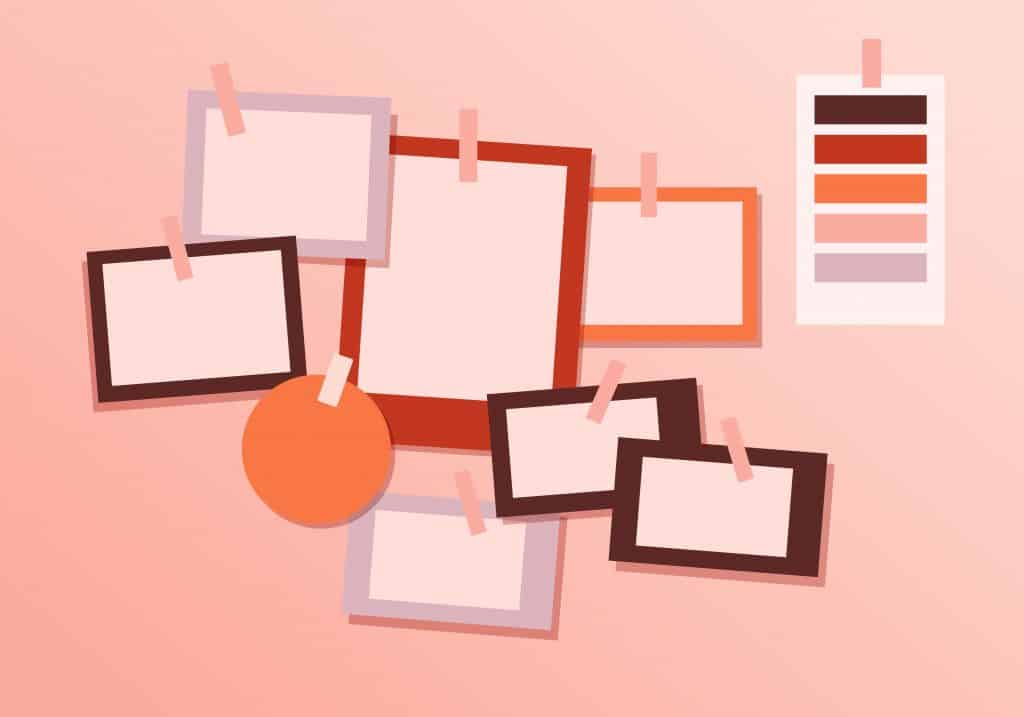Why Are Mood Boards Important In Web Design?
You’re working with a client who seems to have a unique idea for a web application, and they want you to work on a design that accentuates their concept. Since it’s something you’ve never heard of before, you’re struggling to come up with a good design. And after showing them your work, they seem unsatisfied with the outcome.
Naturally, you’d be frustrated how it turned out. If you’ve been doing web design for years, you probably know the feeling. It’s not because they had high standards or because you were lacking. It’s simply due to a misunderstanding between you and the client. After all, you can’t summarize an entire web design plan with just words, and that’s where mood boards come in.

What Are Mood Boards?
A mood board is a compilation of images, texts, and other graphical objects that aims to present a specific style. It’s often used by creative artists such as photographers, graphic designers, and interior designers.
Mood boards can include the following elements:
- Images
- Texts
- Color palettes
- Grids and patterns
Originally, mood boards are made of cardboard, paper, and other artistic materials, but there are now digital mood boards. If you want to know more about it, check out this blog.
If you’re wondering what makes mood boards essential, these following points may help:
1. They Eliminate Misunderstandings
When working with a client, it’s important to discuss how they want their web application to look like. However, verbal discussions don’t always go as planned, and there will be misunderstandings. For instance, they might mention their ideal colors are natural ones, but you might have a different perspective on this.
As a result, they may not like the color of your web design. But if you use mood boards, you can figure out what they want right off the bat. Furthermore, a mood board can answer questions you haven’t even asked.
2. They Answer Valuable Questions
Discussing a web design verbally can only do so much. At the end of the day, you would still have questions left unanswered. But that’s often not the case with having a mood board as it may even answer questions you haven’t thought of before. Here are a few examples:
- What colors would be suitable for the web application?
- What font style should be used?
- What images would best represent the web design?
- What shapes should be used the most for the website?
The more information you have, the easier your job will be. And believe it or not, these questions can go a long way in helping you know what the client wants.
3. They Pave The Way For Collaboration
The main reason why mood boards became popular was that it is practical and easy to be done. It takes only a few hours, and you don’t have to be experienced to use it. But most importantly, everyone can pitch their idea by simply adding elements to the board. Thus, creating it is a perfect activity if you want to collaborate with your team.
Being able to listen and consider everyone’s ideas are important in building a well-rounded project, so having a mood board is a great means to build teamwork.
4. They Bring Inspiration
One of the most common reasons why all kinds of creative artists use a mood board is to motivate themselves. Having inspiration, web designers can work more effectively and productively since their ideas become more focused. It also helps them get in the right mood before working since the board would set the tone of the project, which is something most artists fail to do.
5. They Encourage Client Participation
Your job as a web designer extends beyond simply creating a web application. You also have to gain your client’s trust along the way, and what better way to do it than letting them feel involved in the project. There are a few ways to do this, and one of which is by allowing them to pitch in their ideas. Having a mood board is a perfect medium for everyone to chip in ideas and participate in the process.
Conclusion
Mood board isn’t something you’ll often hear as a web designer, but its benefit is going to be crucial for the industry in the long run. Hence, it’s a good idea to understand it now, so you can gain an edge over your competitors. After all, having a clear vision of how your project would look like is the best way to get the job done.



